






ALL eyes are turning to London for an upcoming summit on May 19 to discuss an historic new security and defence partnership between the UK and the EU.
A number of other topics including youth mobility and trade will also be high on the agenda, sparking hopes that a grand accord can be reached to resolve a number of outstanding issues.
Speculation on the Rock has been rife that the announcement of a treaty with the EU has also been added to the list.
It follows on from the optimistic mood shared between the UK and the EU for the first time in years after an era of Brexit-related tension.
The threat of a revanchist Russia and an unreliable Trump administration has focused minds in both London and Brussels on the importance of new ‘strategic partnership’.
The UK’s defence budget of €75 billion in 2024 accounted for nearly 20% of military spending when combined with that of its EU neighbours, underlining the importance of military cooperation and the joint threats they face.
Part of the negotiations hope to bring the UK into a joint military procurement program with EU states, enabling European militaries to buy British-made military equipment through a new €150 billion European defence fund. With so much at stake, the EU Commissioner Maros Sefcovic has even hailed the UK as a ‘key partner’ and said he is looking forward to a ‘new chapter’ in relations. He also praised the ‘exemplary cooperation’ between the respective foreign ministers of the UK and Spain in Gibraltar talks, which he said are moving in a ‘positive direction.’
Spanish Foreign Minister Jose Manuel Albares echoed these comments earlier in the week when he said negotiations are ‘making good progress.’
Speaking on Wednesday, he reaffirmed that removing the physical fence between Gibraltar and Spain remains the ‘core objective’ of ongoing talks with the UK and the European Union.
Coupled with the relentlessly optimistic messaging coming out from all camps on the hopes of sealing a deal in recent months, it raises hopes that a historic treaty could be announced at the London summit.



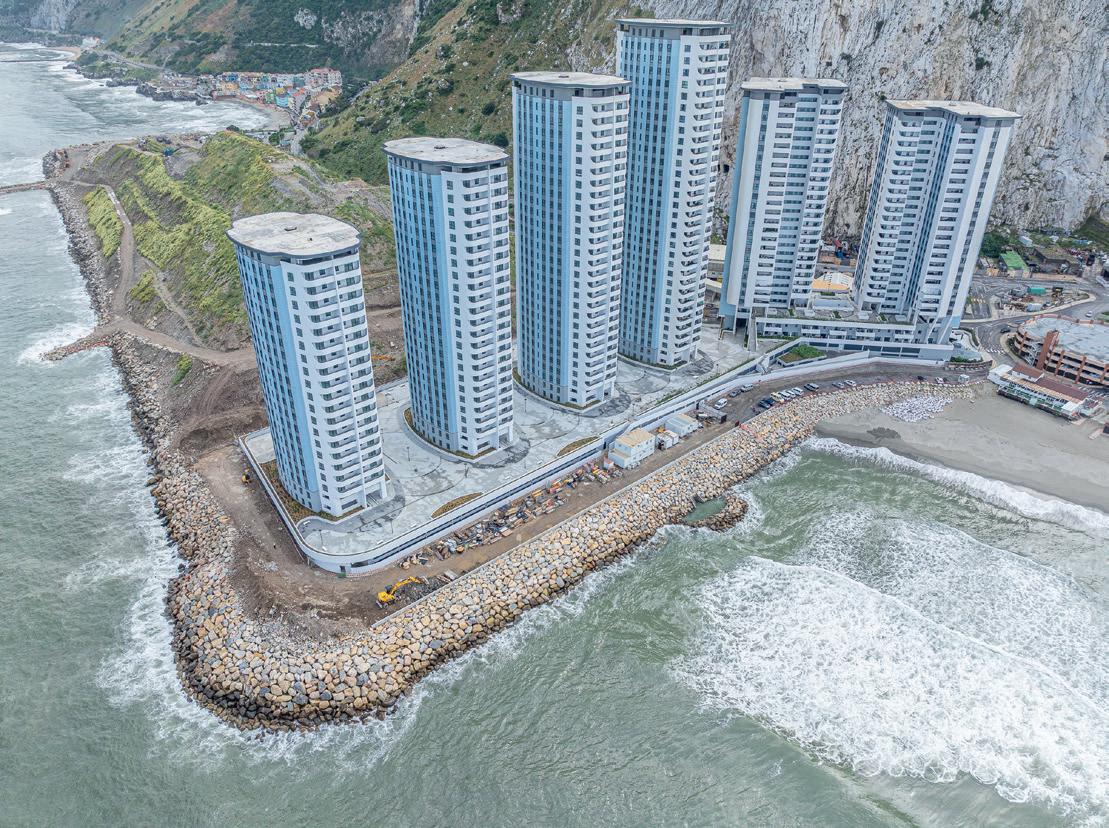
The Olive Press News Editor recalls how he fell in love with Mijas when he got married there
See page 13


THE second phase of Hassan Centenary Terraces is now complete, delivering a further 285 new affordable homes to local families. The completion marks the final stage of the development, with all 665 properties now ready for occupation.
Purchasers of the second phase properties can expect to receive Notices to Complete in the coming days, according to a government statement released yesterday. Additional developments are also underway at Chatham Views and Bob Peliza Mews, while plans for further affordable housing at the projected inner harbour reclamation are also in the pipeline.

A MIGHTY Spanish politician who has long been a fixture on the Costa del Sol is facing possible jail time over claims he misappropriated public money.
The mayor of Estepona, Jose Garcia Urbano, is facing up to three years in jail for allegedly paying a lover for a bogus job to ‘check lampposts and flowerpots’ in 2023.
The PP heavyweight, seemingly a future president of the Junta, is set to face a jury trial in June over the case, which stems from a series of lurid allegations made by the woman – dubbed the Amante La Farolera, or ‘lamppost lover’ – and her policeman ex-husband last year.
The claims by the former Policia Local are linked to Urbano allegedly coercing them into a sordid menage a trois over 18 months.
They alleged that Urbano used a combination of threats and favours - including a free beachside apartment - to control them, in exchange for lurid wife-swapping sessions at a castle/hotel Urbano owned in Monda, near Marbella.
Spanish mayor facing prison and resignation calls over claims he paid lover with public money to check ‘lampposts and flowerpots’
By Walter Finch
However the judge eventually shelved the case on the grounds the unusual relationship had been ‘consensual’.
While the mayor has spoken publicly claiming he was ‘being smeared’, Judge Inigo Jose Villar, decided there were other charges that needed to be levied.
In particular, how the woman, initials ‘CPB’, took home over €5,376 of taxpayer’s money for just 48 days of work between February 13 and March 31, 2023.
CPB testified in an earlier hearing that she ‘never once set foot in the town hall’ during this period.
“I didn’t even go into the office once,” she told the judge.
“When we saw each other he (Urbano) gave me money so that I wouldn’t go, because he knew my financial state, which wasn’t good.
“I couldn’t afford monthly rent so he offered me this position.”
Estepona PSOE Councillor Emma
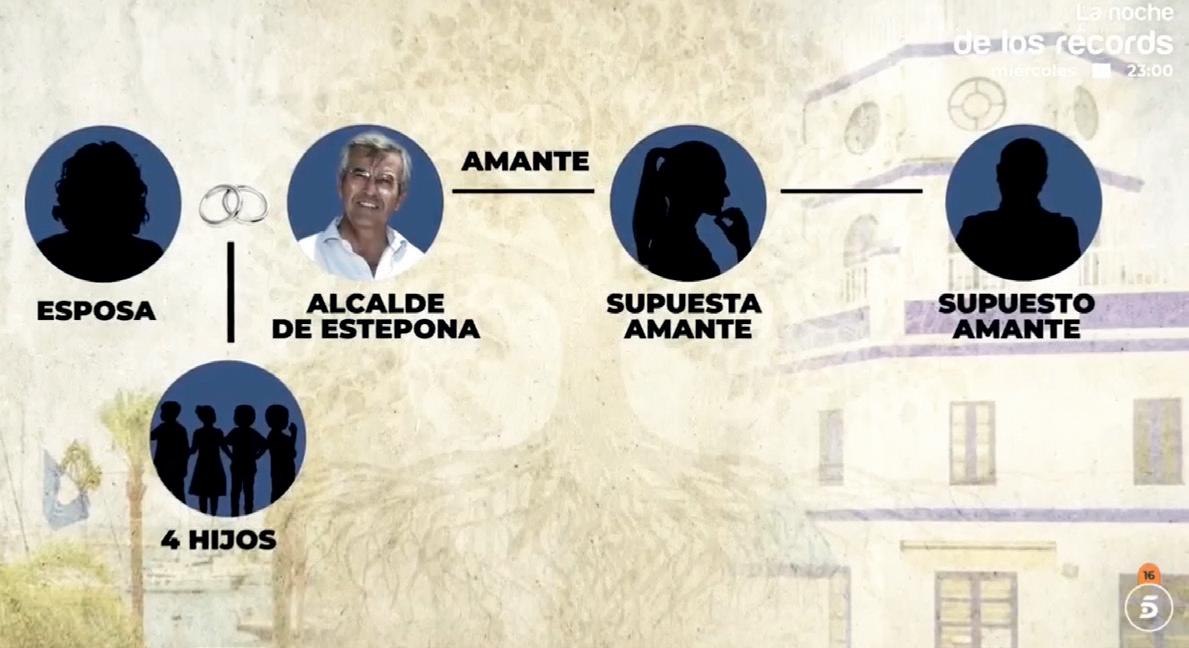
Molina this week told the Olive Press she had called for Urbano’s immediate resignation over the ‘very serious’ charges.
“Handing out public money to a person he had an intimate relationship with – and who never worked there – is surely enough to make him stand down,” she insisted.


It marks an unlikely toppling of a teflon titan who has long enjoyed a level of impunity within Andalucia, and will likely have his fellow costa mayors feeling nervous.
The step-son of the PP Marbella mayor, Joakim Broberg, is currently facing up to 22 years in jail in a trial just begun in Madrid.
He is accused of importing hash into northern Europe and laundering the cash through Marbella real estate while leading a Swedish mafia drug trafficking network.
The case connects to the mayor through her husband, Lars Broberg, who was also indicted for drug trafficking before his death. Meanwhile, closer to home, the mayor of Algeciras, Jose Landaluce (also PP), has been battling allegations of sexual harassment earlier this year towards two female councillors on his team.
Opinion Page 6




IBIZA is back – and the island is louder, prouder and ready to out-party everywhere on the planet.
The world’s most iconic clubbing Mecca has flicked the switch on summer 2025 with a raucous ‘soft opening’ weekend that felt anything but soft. While the official opening parties kick off later this month,
The Olive Press sent Yzabelle Bostyn and her mum to celebrate her 60th birthday at Ibiza’s opening weekend
By
the Olive Press hit the White Isle early – and let’s just say, if this is the warm up, the main event is going to be biblical. Landing in San Antonio, my mum and I (and friends) joined the early-bird faithful dancing


through April’s warm nights at reopened legends like Es Paradis (home of the famous water parties) and Eden, which hosted tech-house royal ty Deeperfect on April 23.
Big names are lining up to take over the decks this season. Calvin Harris is back at Ushuaïa twice a week, David Guetta’s got Mondays, Martin Garrix owns Thursdays, and the mighty Hï Ibiza next door is bringing back Black Coffee, Hugel and the Martinez Brothers And let’s not forget Ibiza Rocks, where Craig David will Re-rewind once more by the pool. Even the super sleek Chinois is getting in on the act, bagging masked maestro Claptone for its summer run.
But it’s not just for 20-somethings chasing TikTok clout. We came for my mum’s 60th, with a group of family and friends of all ages and ended up dancing


till 4am at the legendary Pacha’s ‘Purple Disco Machine’ night – with Grammy-winning DJ Mousse T spinning feelgood bangers and not a sticky floor in sight.
From age 19 to 61, we all agreed: Ibiza is magic. Sure, the drinks dented the wallet, but the vibes? Priceless.
And with celebs like Maya Jama, Idris Elba, and Rita Ora spotted partying on the island last year, we’ve no doubt Ibiza 2025 will be its most star-studded, beat-thumping, jaw-dropping season yet.
Now pass us the Berocca –we’re booking flights for the real opening weekend!
DON’T LEAVE YOUR BRAINS AT THE AIRPORT, SAYS CHARLIE MULLINS
Sun, scams and a shooting near my front gate – welcome to the Costa del Crime, but leave my name out of it!
IMIGHT have only just unpacked the boxes and put the kettle on in my new life as a full-timer on the Costa del Sol, but make no mistake - I’ve had a second home out here for the better part of two decades.
Long enough to notice that the sunshine dream is being slowly soured by a rising tide of crime.
Think less ‘mañana vibes’ and more raw sewage bubbling into the Thames - only with palm trees.
Like many other weary Brits, I came to Spain chasing cleaner air, fewer muggers, and politics that didn’t feel like an episode of Black Mirror. But lately? The Costa’s gone a bit Costa Nostra.
Don’t believe me? Take a stroll through the crime pages of the Daily Mail - assuming you can still stomach the whiny UK rag.
Imagine my delight when my lovely Spanish villa - my little patch of escape - was namechecked in the Mail, no less... as a location marker for a gangland execution!
Yes, a poor bloke was gunned down in Mijas - and the journalist helpfully let readers know it happened ‘just 20 minutes from the villa of Charlie Mullins, Britain’s richest plumber’. How thoughtful!
Honestly, it sounded like they were about to chalk a crime scene outline outside my front gate. Next time something kicks off, maybe give Lord Sugar or Simon Cowell’s gaff a mention instead, eh lads?
Only kidding. Love the coverage. Sort of. All that said, I’m not hanging up the ‘For Sale’ sign just yet. Spain’s still a step up from the dystopian mess the UK has become in 2025 - where being mugged is practically a commuter sport.
HOLLYWOOD bombshell
Charlize Theron has declared her undying love… for croquetas
The Oscar-winning actress, 49, couldn’t stop gushing about Spanish food in a recent interview on US TV’s The Late Show even joking she’d be happy to tie the knot with the deep-fried delicacy.
“Is it legal to marry food in Spain?” David Letterman asked.
“I think you could probably marry a croquette if you wanted to,” Theron quipped, barely holding back the laughter.
The South African star revealed she fell head over heels in love with Spain during a getaway with mates across the country, praising the local cuisine as ‘next level’.
Theron didn’t stop there. She praised Spain’s tapas from tortillas and paellas to fresh seafood and ‘dirty but brilliant’ train rides.


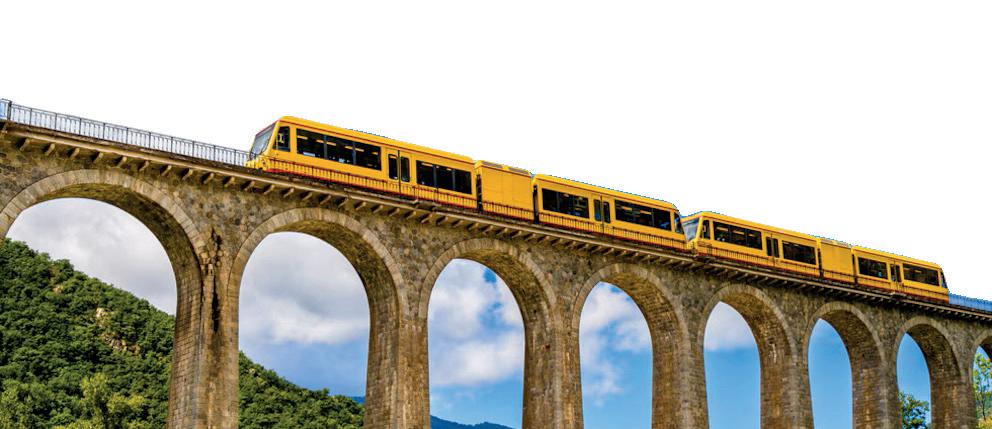

THERE’S a furry frenzy in Doñana National Park as two more Iberian lynx cubs have pounced into the world. First-time mum Tamesis shocked staff at El Acebuche breeding centre after giving birth to a stillborn - then two days later, she popped out two healthy cubs. It’s the fifth litter of the 2025 season, bringing this year’s total to 14 cubs and counting.

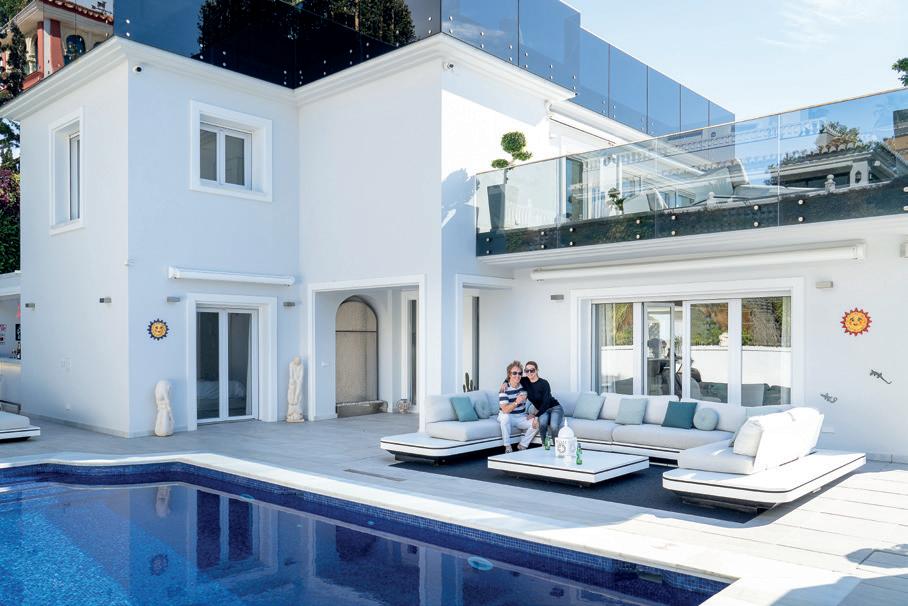












But here’s the bit that really baffles me: Brits scamming other Brits. It’s like we bring our own villains with us.
Maybe it’s the warm weather, or the sangria-induced sense of security - but too many expats leave their street smarts at Malaga Airport and fall straight into the hands of a coach-load of charming con artists with British accents. We’ve seen it before. John Palmer’s dodgy timeshare empire in the ’90s, and now the disgraceful Continental Wealth Management (CWM) scam - €35 million swindled from mostly retired Brits who thought their money was safe in sunny Spain. Is the Iberian Funeral Plan case another one about to shock us?
The Olive Press, I should add, has been all over these scams from day one - hats off to them.
Veteran mum Madroña kicked off the season with triplets in March, followed by Parra, Narsil,

and Sardina. Kolia and Oleander are due to give birth next. Back in 2002 there were just 94 Iberian Lynx left. There are now over 2,000 wild lynxes roaming thanks to conservation efforts.









And just last month, one of the main players in CWM, Jody Smart (aka Jody Pearson), got banged up for three-and-a-half years. Justice, of sorts.
What’s my point in all this? Honestly, I’m not entirely sure - except to say: there are bad apples everywhere, even in paradise. So keep your wits about you. And if a deal sounds too good in
it probably is.
or

ST Michael’s Cave was transformed into a magical concert hall for the second installment of the popular Concerts by Candlelight series.
The event - titled ‘Queen on Strings’ - featured a moving tribute to the legendary rock band, performed by a talented string quartet with arrangements by Miguel Monge.
Adding to the atmosphere was the powerful voice of local opera star Nathan Payas, alongside the harmonies of the Gibraltar Youth Choir, creating a fusion of classical elegance and rock anthems.
The stunning candlelit setting of the cave elevated the evening further, offering a uniquely intimate concert experience that left attendees in awe.
The organisation now looks forward to more enchanting evenings as the series continues, with promises of more spectacular events designed to bring the community together in celebration of music and culture.
THE Spring Cultural Programme has been announced June 20.
Highlights include VE Day and Heritage Week celebrations from May 8 to 11, and performances of Twelfth Night by the Young Shakespeare Company for local schools from May 12 to 16.
Art lovers can visit the Spring Visual Arts Exhibition at the Gustavo Bacarisas Gallery from May 21 to 31, while book enthusiasts can enjoy a public Book Crossing event outside the Cathedral of Saint Mary the Crowned on June 7.
Additional events include the 10th anniversary of the Mario Finlayson National Gallery on June 3, a Celebration of Opera at the Cathedral of the Holy Trinity on June 10, and the Calentita Food Festival on June 20.
Other organisations are also contributing, with the Heritage Trust’s Painting Competition on May 10 and the National Museum’s Open Day on May 17.
Minister Christian Santos praised the ‘myriad of events designed to appeal to all tastes and audiences’.

A FORMER Gibraltar resident has officially become the oldest person in the world.
Englishwoman Ethel Caterham, who currently lives in a care home in Surrey, has taken the Guiness title at 115 years and 253 days.
She was born in Hampshire on August 21, 1909 as the youngest of eight children.
But she lived many years in Gibraltar when her British Army Major-husband was stationed on the Rock.
Ethel became the oldest person in the world after the death on 30 April of the previous record holder, Inah Canabarro Lucas, who was a 116-year-old nun from Brazil.
She in turn took the world-record from Maria Branyas Morera who died in Catalunya at the age of 117 last August.
A MAJOR British bank stands accused of facilitating a ‘colossal fraud’ worth millions in a Gibraltar courtroom showdown that began this week. Liquidators claim NatWest missed clear warning signs of suspicious activity after huge sums were repeatedly transferred to high-risk countries including Ghana and Guinea. Lawyers told the court the bank should have spotted ‘obvious red flags’ involving two companies – Kijani Resources Limited (KRL) and Kijani Limited.
By Walter Finch
Barrister Morrison Casey argued that any reasonable banker should have noticed these warning signs immediately.
The four-week trial centres around claims that NatWest allowed suspicious transactions to continue for years before

A TEMPORARY ban on octopus fishing has come into force across Gibraltar waters.
Lasting from April 28 to June 9, 2025, it aims to protect the common octopus during its crucial egg-laying period and boost the species’ chances of successful reproduction.
Once the ban is lifted, a strict catch limit of 5kg a day will be enforced for a further three weeks, from June 10 to July 1, while octopi under 1.5kg must be returned to the sea.
Authorities said the seasonal restriction is an important tool in maintaining sustainable fish stocks and ensuring that the species continues to thrive in Gibraltar’s marine environment.
Fishermen are reminded that enforcement officers will be monitoring activity at sea and along the coastline to ensure full compliance.
YET another Brit has been appointed to a public position of influence after a former head of the British Army was welcomed to the Rock.
General Sir Patrick Sanders has been made Honorary Colonel of the Royal Gibraltar Regiment, a ceremonial position serving as a key link between the regiment, the monarchy, and wider British military tradition. The decorated general, who led as Chief of the General Staff until June last year, will officially take up the role on May 8 after the appointment received royal approval from King Charles himself.
General Sanders has a personal connection to Gibraltar, having lived on the Rock as a child and attended local schools before returning years later as a young officer with the Royal Green Jackets.
The appointment, initially for three years, follows nomination by the Regimental Council and endorsement by the Governor, Lieutenant General Sir Ben Bathurst. Sanders’ appointment follows on the heels of Welshman Owain Richards as the new
Commissioner of Police and Englishman
Phil Sharman as the new principal auditor. However sources played down that this latest Brit has been part of an orchestrated play by the UK Foreign Office.
“The title is honorific only so perhaps there is nothing to be read into this,” one senior figure said.
They added: “General Sanders is very highly regard ed in the Royal Gibral tar Regiment and the appointment of such a high rank ing officer has been very welcome by the upper ranks and retired colonels of the Royal Gibral tar Regiment.”


finally raising concerns.
Within just one month of KRL's account opening in 2012, a staggering £12 million was transferred to a Ghanaian subsidiary company.
By year's end, payments to Ghana and Guinea totaled approximately £20 million.
The court heard that an earlier attempt to open the account in 2011 was rejected due to Tanzania connections that were deemed high-risk.
However, a second application in 2012 that allegedly omitted these risk factors was later approved.
Morrison Casey told the court that the issue isn't whether specific transactions were authorised, but that NatWest failed to spot a clear pattern of suspicious activity.
The liquidators argue that while NatWest eventually filed
COMEDIAN and author David Walliams sold-out a double appearance at the Europa Sports Arena in a prelude to the 2025 Gibunco Gibraltar Literary Festival. Over 1,600 local school children were treated to a lively daytime show, while later that evening, the arena filled again - this time with over 1,400 adults - for a more grown-up session.
Walliams shared stories from his life and career, blending comedy with heartfelt moments and he delighted the audience by calling Gibraltar the ‘true Little Britain’.
a suspicious activity report in 2015, the warning signs were evident from 2012 when the account was first opened.
NatWest's defence team is vigorously contesting the claims. They argued that banks must primarily follow their clients' instructions and aren't expected to be investigators examining every account detail.
NatWest lawyers told the court that staff were tricked just like everyone else, misled with false documents and assurances by what he described as ‘confidence tricksters.’
In a dramatic counterclaim, Casey alleged the Kijani companies themselves were ‘fraudulent from the very beginning’ and operated a ‘sophisticated Ponzi scheme.’
The trial continues and is expected to last until early June.


RECONDITIONED: Old gym to be used by school
PLANS to convert a former car showroom into a temporary facility for the new St Martin's School have sparked concerns about whether the school met requirements when it was opened in 2021. The proposal will see the old Strength Factory site on Glacis Road used for the pupils with special educational needs. However, the move raises questions about whether the school was adequately sized from the outset, despite previous assurances it was ‘future-proofed.’
The GSD pointed out that pupils from St Martin’s School have had to share classroom space with Governor’s Meadow and Bishop Fitzgerald School for several years. Meanwhile, the number of pupils with special educational needs in government schools has increased dramatically from 20% in 2014 to 30% in 2023, according to figures from the Department of Education.
Shadow Minister for Supported Needs, Atrish Sanchez, called the plan a ‘patchup job’ that risks creating inequality.
"The reality is that a school is not just a building, it is so much more than that," said Sanchez.
"This school in particular is a highly specialist environment where valuable and life-changing work is carried out every single day by staff that are nothing short of exceptional."
She expressed concern that while some students would remain at the purpose-built main site with facilities including a hydrotherapy pool and rebound therapy areas, others would be relocated to what she called a ‘makeshift facility’ on Glacis Road. "This doesn't look like a wellthought-out plan. It feels more like a patch-up job, leaving some children with the short end of the deal," she added.

A GROUP of young crocheting extraordinaires have donated a rainbow coloured quilt of their own creation to the Gibraltar hospital’s children ward. The Year 6 extracurricular Crochet Club at St Anne’s Upper Primary School donated the blanket to GHA Rainbow Ward, a 21-bed unit caring for children with medical and surgical needs.
The students say they are delighted to contribute to their community and hope this blanket will bring smiles to the children at the ward.




A campaigning, community newspaper, the Olive Press represents the huge expatriate community in Spain with an estimated readership, including the websites, of more than two million people a month.
THE unfolding scandal in Estepona where Mayor Jose Garcia Urbano allegedly paid a lover thousands of euros for ‘checking lampposts and flowerpots,’ is more than a lurid headline.
It’s a window into the kind of unchecked cronyism and misuse of public funds that continues to taint local politics in Spain.
Even more disturbing is how many town halls manage their image - by quietly funnelling tens of thousands of euros into ‘advertising’ with friendly or politically-aligned media outlets.
This isn’t just about promoting local events or tourism. It’s about buying silence.
At the Olive Press, we regularly see how critical reporting - especially when it shines a light on corruption - can lead to the loss of important advertising contracts from public institutions.
Town halls that freely spend up to €100,000-a-year of taxpayer money promoting themselves in rival publications often pull their ads from us when we ask uncomfortable questions.
And yet, we refuse to look the other way.
Our duty is to the public, not to the powerful. We believe taxpayers have the right to know how their money is spent - whether it’s on fake jobs, inflated contracts, or dubious ad deals.
If exposing this costs us, so be it.
Journalism must serve democracy, not convenience. We won’t stop reporting the truth. And the Estepona case, with its bizarre mix of alleged sexual coercion, political favouritism, and possible fraud, is a truth the public deserves to know.
Until transparency becomes the norm, stories like this will keep surfacing.
The questions are: how many more lamppost scandals must we see before real accountability begins? And should public advertising budgets be audited to protect press independence and ensure real transparency?
The answers are ‘likely many’ and ‘yes, about time too’.
PUBLISHER / EDITOR
Jon Clarke, jon@theolivepress.es




Dilip Kuner dilip@theolivepress.es Walter Finch walter@theolivepress.es
Yzabelle Bostyn yzabelle@theolivepress.es
Samantha Mythen samantha@theolivepress.es
Tom Ewart Smith tom@theolivepress.es
Victoria Humenyuk Makarova (+34) 951 154 841 admin@theolivepress.es

Alex Trelinski alex@theolivepress.es
Joshua Parfitt josh@theolivepress.es
Dylan Wagemans dylan@theolivepress.es
Estefania Marquez (+34) 658 750 424 accounts@ theolivepress.es
contact +34 951 15 48
Deposito Legal MA: 834-2017


WHEN a court on the Costa Blanca dismissed a case against the conmen behind the Continental Wealth Management (CWM) fraud in 2023, the Olive Press couldn’t find a single victim willing to talk.
All too exhausted after years of private litigation in one of Spain’s greatest expat scandals, they declined to even comment on their devastation.
The Denia court had ruled there was ‘insufficient evidence’ to prosecute four executives of the shameful ‘independent offshore investment company’.
Years of careful legal preparation showing how thousands of victims had collectively lost 35 million euros when CWM collapsed in 2017, apparently went down the drain. Meanwhile the crooks who stole their retirement savings looked to have gotten away with it, as they lorded it from their multi-million euro mansions in the Javea hills or exclusive beach clubs nearby.
One of those laughing all the way to the bank was a small-time TV presenter and glamour model going by the name of Jody Kirby. She was listed as the sole director of Continental Wealth Trust, the successor company after CWM was wound up by her ex-partnerin-crime Darren Kirby, a financial advisor
A recent conviction sending infamous expat Jody Smart to prison casts a glimmer of light at the end of the long dark tunnel in the 35 million euro Continental Wealth Management scandal
By Walter Finch
from Henley, in the UK.













While Darren fled to Australia and later Cambodia, and somehow avoided prosecution to end up ‘working shifts as a pub chef in Surrey’, Jody stayed in Valencia.
Changing her name to Jody Bell and then to Jody Smart, she eventually became Jody Pearson, when she married an actual chef Franco Pearson, who was also based on the Costa Blanca.
She had already launched a fashion label, Jody Bell London, through the money she made from CWM and was even making regular trips, business class, of course, to promote it in New York, Miami and Milan.




ENQUIRIES (+34) 951 154 841 distribution@ theolivepress.es













During saccharine promotional videos she bragged of her friendship with celebrities, including Denise Van Outen, and opened up her wardrobe to show off her hundreds of pairs of shoes and thousand-euro frocks.
Boasting of her glamorous lifestyle on Instagram, where she dubbed herself ‘a yoga teacher, fashion designer and weeding planner’ she told her 9,000 followers about her trips to Thailand, Puerto Rico and Dubai, over an extraordinary 2,600 posts.
Using her upmarket Oceana beach club, in Benissa, as a base, she organised weddings and tried to reinvent herself as a philanthropist and entrepreneur, egged on by close friends who gushed about her business acumen and ‘big heart’.
For the victims though - many of them ruined and with an uncertain future in old age - there was to be some sweet vengeance.

IT HAS been six months since floods ripped through Valencia, killing 228 people and leaving entire communities drowning in grief.
But while nature may have sparked the disaster, many believe the true devastation was man-made.
Now, some of those responsible are finally being held to account.
On October 29, Valencia faced one of Europe’s most catastrophic weather events in recent memory.
A gota fria storm system - long forecast by meteorologists - unleashed a year's worth of rain in just hours.
Ravines became raging rivers. Cars floated through the streets of towns, where dozens died returning from work.
Families were swept away. Lives were lost in garages, homes, and on the roads.
And yet - as catastrophe closed in - the warning never came.
The region’s emergency alert system remained silent until 8.11pm.
Yes - pm, not am.
By then, it was too late. Weather agency
Aemet had issued a red alert before sun rise and the university and schools had closed.
Emergency calls then flooded the sys tem all day. But the regional govern ment - led by Carlos Mazon (right) - wait ed until nightfall to act.
“The damage couldn’t have been avoided,” said Judge Nuria Ruiz Tobarra in a recent ruling.
“But the deaths could have.”
By Tom Ewart Smith

Tobarra, who is leading the criminal investigation into officials’ failure of duty, highlights an uncomfortable truth: The real tragedy lay not in the natural disaster, but the lack of leadership that followed.
Two senior officials - former emergency chief Emilio Argueso and Salome Pradas, who oversaw alerts - now face manslaughter charges.
Shockingly Pradas admitted she didn’t even know about the emergency alert system until the afternoon it was needed.
The message that was eventually sent was not only late, but vague - asking people to avoid travel, even though many had already died in their homes. Both were sacked. Yet Carlos Mazon
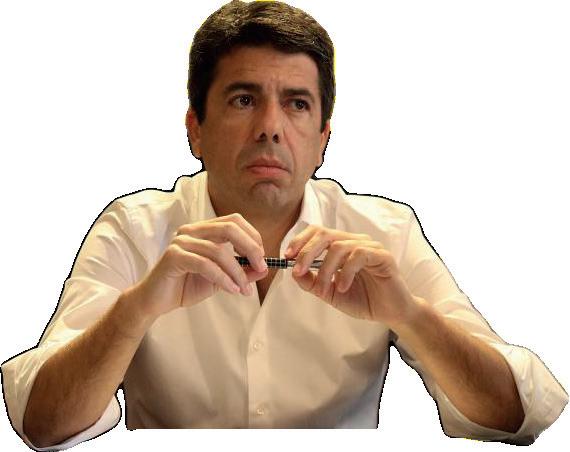
His failings didn’t start on the day of
A year earlier, Mazon had scrapped the Valencian Emergency Unit, a specialised flood-response unit formed after fatal storms in
His government also promoted construction in flood-prone areas and rolled back cli-
For like a bolt from the blue, they received news, via the Olive Press, that Jody had been convicted of fraud in an Alicante court last month.
A three-and-a-half year jail sentence for Jody was like a gift from providence for the victims who had long resigned themselves to the innate cruelty of the world. While the first judge in Denia court failed to wrap his head around the enormous, multinational complexities of the scandal - or didn’t want tothe National Court of Alicante had no problems in finding Jody guilty in a smaller case hived off from the main prosecution.

mate protections.
While experts warned of increasing risk, Mazon prioritised cuts over caution.
In Paiporta, 62 people died. In Catarroja, 25. Many never had a chance - not because of what nature did, but because of what their leaders didn’t do. Natural disasters are inevitable. Death on this scale is not.
Today, the scars remain.
The metro between Paiporta and Valencia still runs on a bus replacement. Rubble fills the doorways of homes and businesses. Every cracked wall and broken shopfront is a brutal reminder of a nightmare that never needed to be this bad.
The anger hasn’t subsided either. Protesters have demanded Mazon’s resignation during SIX spearate protests.
One proposal submitted to Valencia City Hall suggests building a clay statue of the president - a tribute to his absence during the floods.
The satirical inscription would read: “Carlos
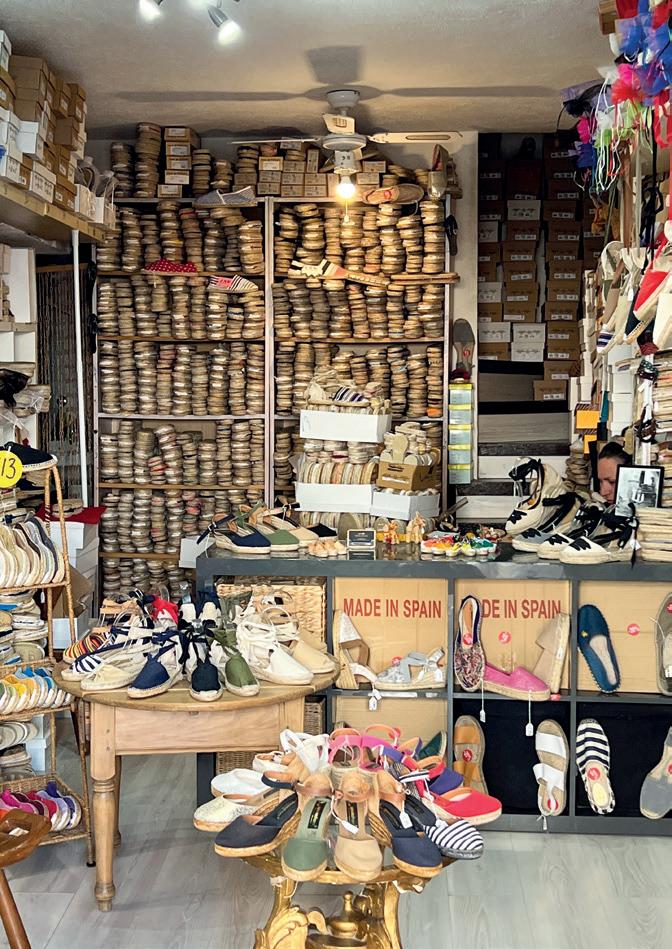
The museum also captures the village’s economic past, like the esparto trade. This tough mountain grass, collected in the hills, was woven into shoes, hats, and bags - an essential lifeline during the harsh postwar years. The museum’s photos and personal stories, like that of a grandmother stitching esparto in the street, are a fascinating window into the past life of the villagers..
One of our favourite parts of Mijas is Constitution Square. It’s still a lively meeting point and a great place to browse high-quality crafts - ceramics, textiles, and more. From there, take a walking tour past key landmarks, like the Virgin of the Rock shrine, carved straight into the mountainside.
Its panoramic viewpoint is one of the best in southern Spain and perfect for a quiet moment of reflection. And then there’s the oval-shaped bullring, built in 1900. Though bull fighting is no longer common, the site occasionally hosts horse shows.
But it’s the surrounding
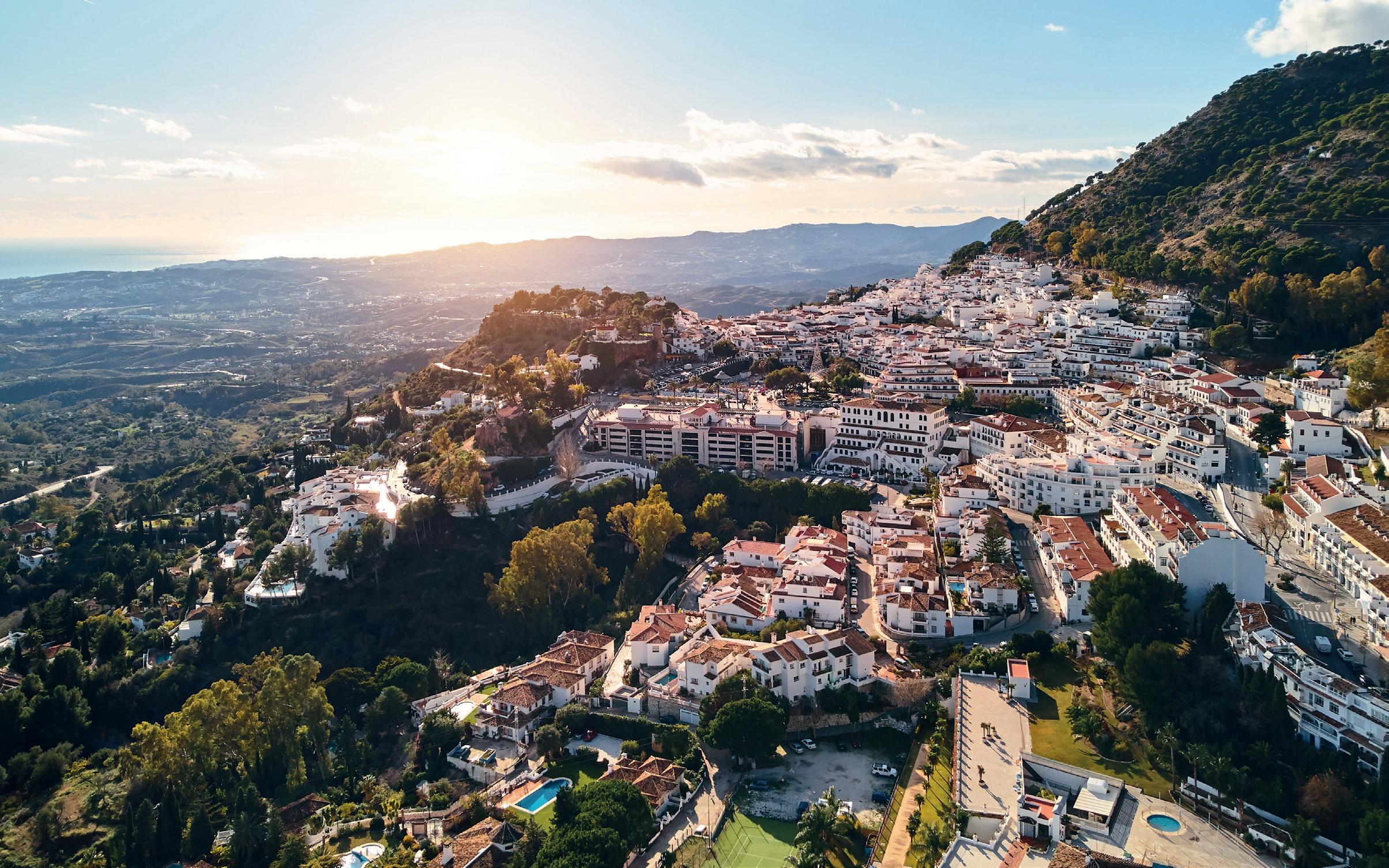
gardens and the path to the edge of the village that hold the real allure - peaceful, flower-filled, and deeply atmospheric.
Mijas is per-
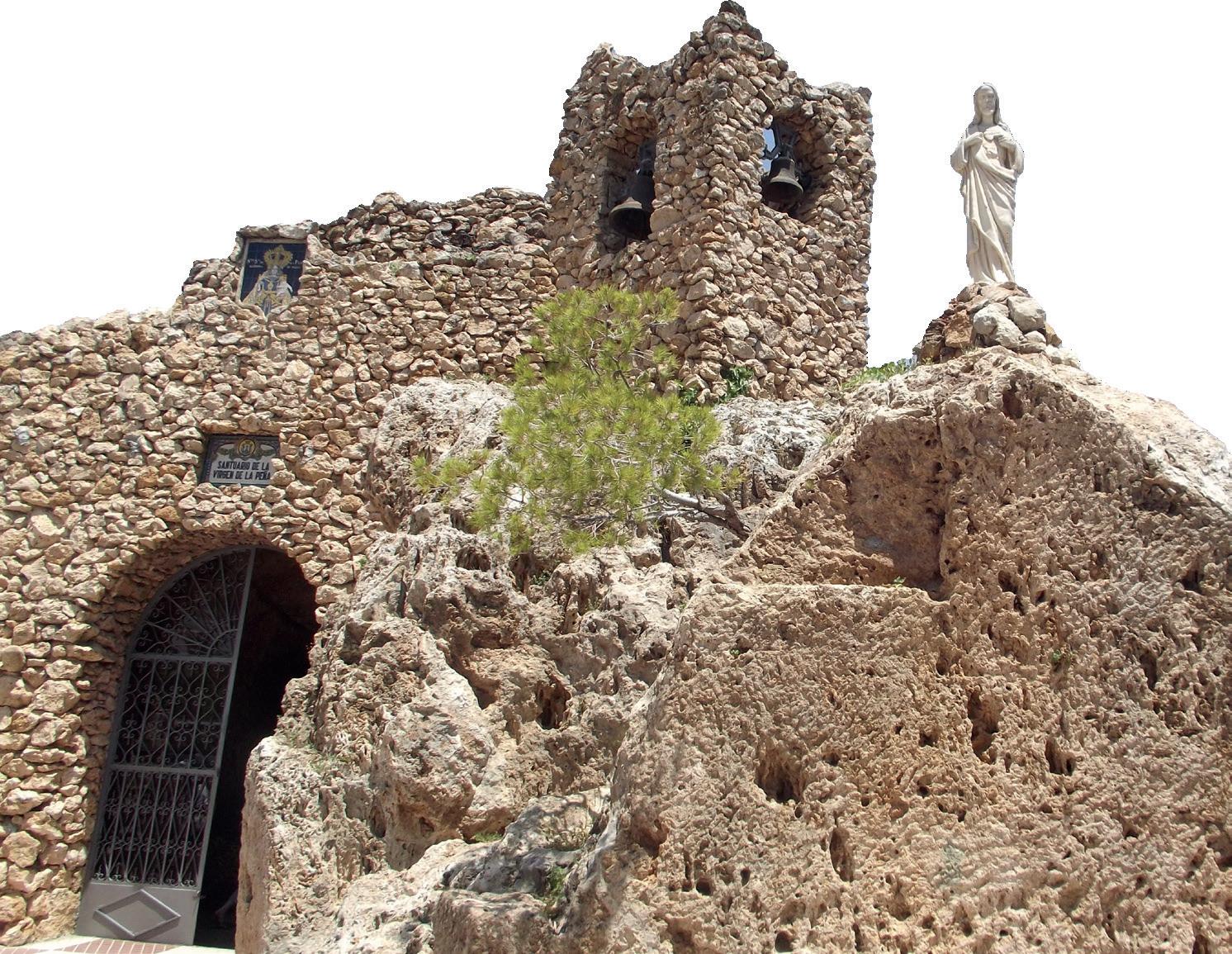
magical in the evening. As the tour buses disappear and the village returns to itself, a gentle hush falls over the streets. Locals emerge with chairs to sit outside their homes, children play
These days, when we return from our home on Mijas Costa down near the coast - whether for an anniversary or just to walk familiar paths - we still feel the same sense of belonging that brought us here three decades ago.
We grab a Victoria beer at a shady terrace, watch the sun dip below the horizon, and smile.
Mijas is not just a village. For us, it’s a love story. And like all good stories, it only gets better with time. in the fading light, and the spirit of old Spain rises gently to the surface. It’s in these quiet hours that Mijas whispers its secrets.








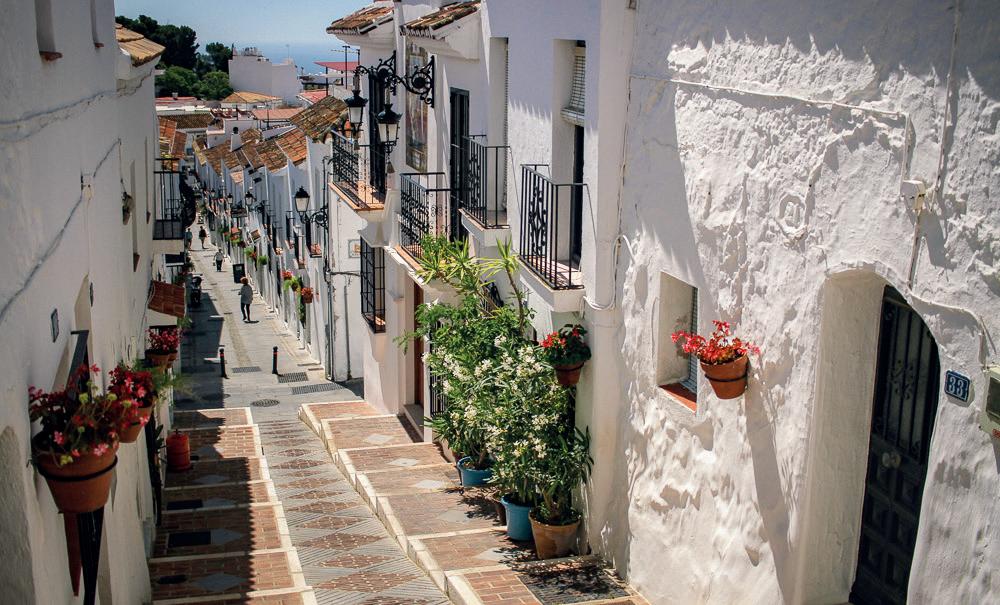

SPAIN will use €60 million of EU money to fund a zero-carbon steel mill in the central Castilla-La Mancha region.
The World Economic Forum has described it as one of the 'five most important industrial decarbonisation initiatives in the world'.
It will be set up in Puertollano and use green hydrogen to produce sponge iron, which will then be mixed with scrap to produce up to 1.5 million tonnes of rolled steel a year.
The plant will create around 1,000 jobs and depending on the timing of formal approval for the project to go ahead, site construction could start before the end of this year.


A NOTORIOUS mine behind Andalucia's worst-ever environmental disaster is poised to reopen – sparking fears of a second toxic tsunami.
The Aznalcollar mine, which unleashed a river of poison in 1998, has been given the green light to resume operations this July.
Environmental campaigners are warning it’s a ticking time bomb. They claim a jaw-dropping 85.5 BILLION litres of toxic wastewater could be pumped straight into the Guadalquivir Riv er – threatening tourist
CONSERVATIONISTS are struggling to free a vulnerable orca hat has become entangled in fishing gear in the Strait of Gibraltar.
The mammal was spotted with ropes and buoys wrapped around its fin, making it very difficult to swim or feed.
A specialised team has been tracking the orca for the last week to try and free it from the objects -- but so far without success.
By Walter Finch
hotspots like Sevilla, Cadiz and the Costa de la Luz.
“This will flood the river with deadly metals – arsenic, lead, cadmium, the works,” blasted a furious Greenpeace rep. “It’s an ecological massacre in the making.”

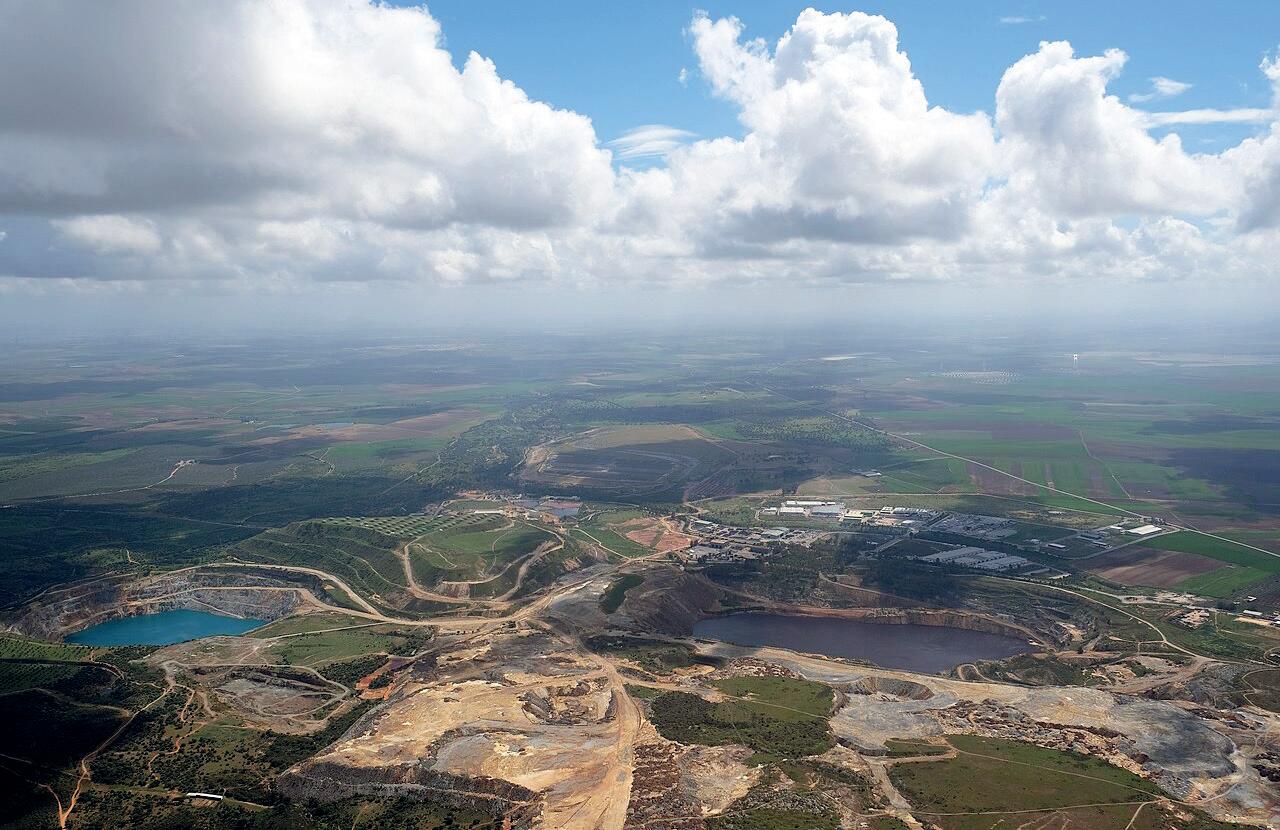
The mine is being revived by Mexican company Min - la that could see the entire project axed – but that hasn’t stopped the Junta Locals aren’t having it. May -

The rescue operation, which also involved the Spanish coast guard, has had to observe strict legal protections for Spain’s vulnerable orca population.
Officials have urged fishermen to avoid throwing old fishing gear into the sea as it remains a major threat during the busy whale season in this key migratory route.
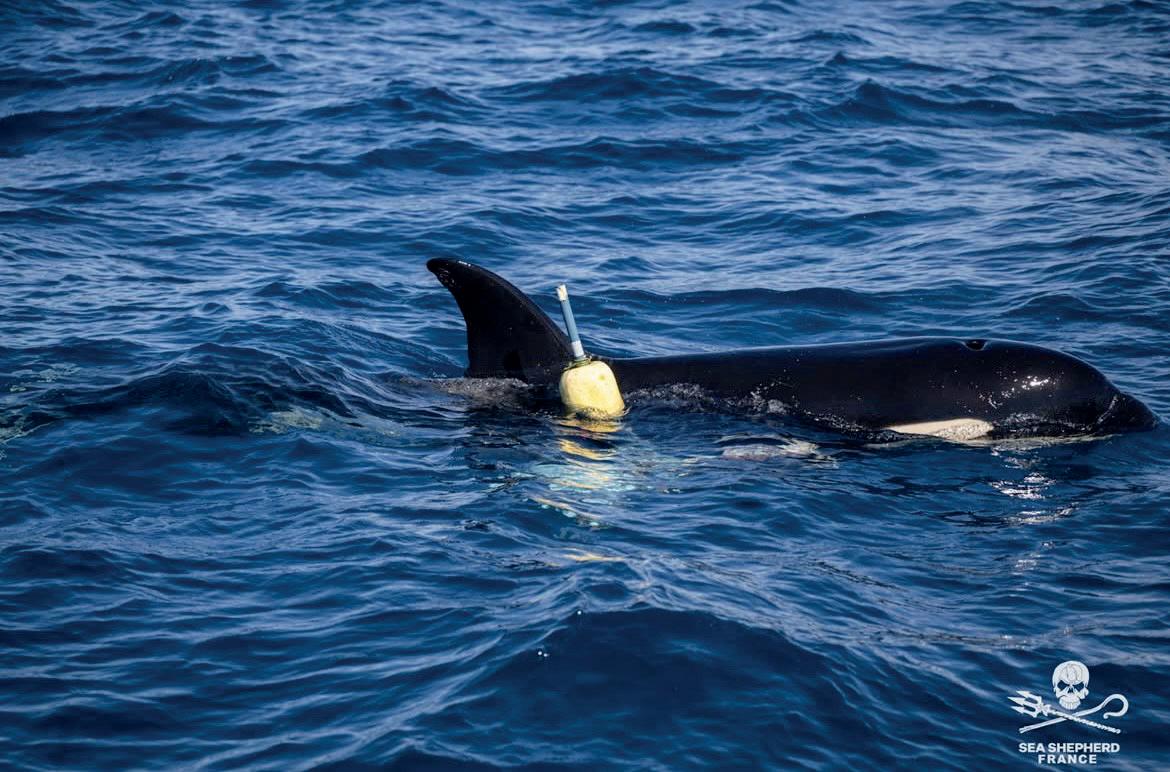

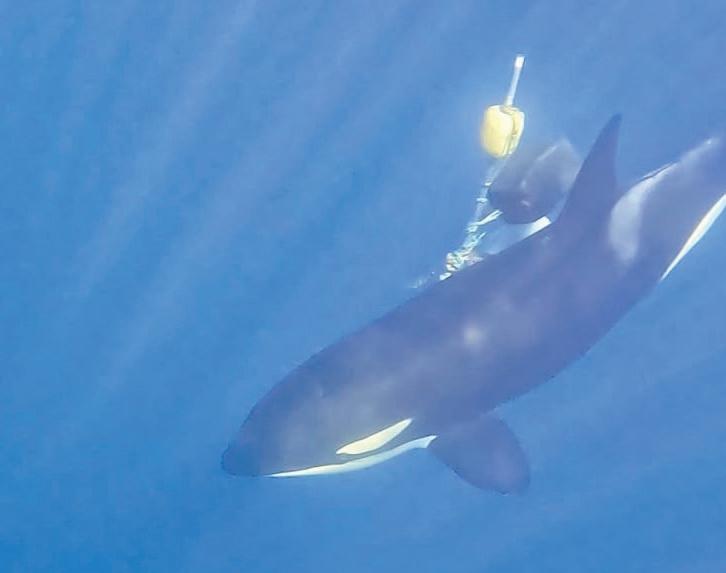
FEARS: of arsenic, lead and cadmium poisoning
ors, farmers, fishermen, medics, scientists and even the Andalucian Ombudsman have banded together, demanding an independent probe into the risks.
Campaigners are especially alarmed about the threat to Doñana National Park, a UNESCO-listed paradise teeming with rare wildlife.
The original disaster in 1998 saw six million cubic metres of sludge devastate 60km of river and cost taxpayers €240 million. The Swedish firm behind it, Boliden, never paid a cent.
With the grim anniversary looming, eco groups are issuing a final warning: “This river is Andalucia’s lifebloodthe Junta must not make the same mistake twice.”
SPAIN is making waves with plans to build its first offshore green hydrogen plant off Gran Canaria’s coast, aiming to cut fossil fuel use and boost energy independence in the Canary Islands.
Spearheaded by marine experts at PLOCAN (Oceanic Platform of the Canary Islands), the H2VERDE project will be located 1.5 km off the island’s northeast shore, using solar, wave, and wind energy to produce clean hydrogen.
Funded with €6 million from the Canary Islands government and the EU’s Recovery and Resilience Facility, the facility will generate 15,000 kg of hydrogen annually.
It will feature Spain’s first offshore hydrogen refuelling station, initially supplying port machinery before expanding to ships.
The project could cut 200 tonnes of CO₂ each year and reduce the Canaries’ 95% reliance on fossil fuels.
“This is about energy sovereignty,” says project lead Alejandro Romero. “The Canaries spend €18 billion yearly on fossil fuel imports, Spain spends €90 billion. Green hydrogen is our ticket to freedom.”
Locals are calling it a green gold rush, expecting jobs, innovation, and a clean-energy boom.

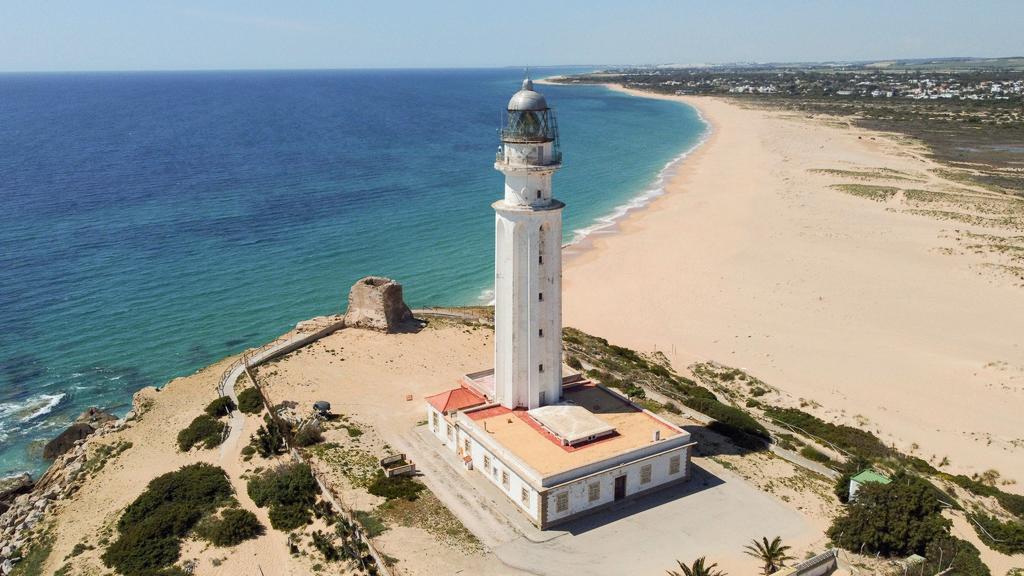
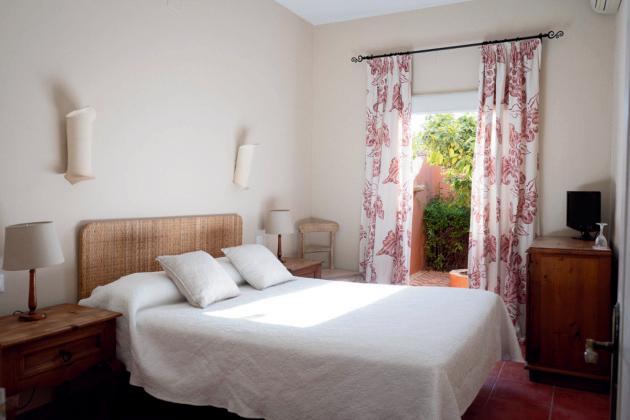


TO many of us, Malaga city is nothing special – the airport is out there somewhere, and the centre lacks the old-world charm of Sevilla or Cordoba.
However, such a view is mistaken: Malaga has plenty to offer, if you know where to look, and we’re not even going to mention Picasso!
There are some fortunate cities in Spain which can proudly boast having a Parador: well, Malaga has two!
Paradores are state-run hotels, usually located in buildings of historical or topographical interest, and usually of 4-star quality. There are 96 of them throughout Spain, and all comers are welcome – you don’t need to be a resident to use the bar or restaurant.
The Parador de Gibralfaro is situated at the top of Malaga’s original lookout hill, and it offers spectacular views out over the Mediterranean. If you are greeting new arrivals, or seeing friends off, don’t waste those precious hours at the airport – bring them here for a relaxing drink in splendid surroundings.
By Michael Coy

The other, the Parador de Golf, sits right on the coast, just a short drive from the airport.
This was actually the very first golf course in Andalucia, inaugurated in 1925 under the patronage of the Spanish royal family, and it still retains something of that old-world elegance. It’s not just for golfers – though the 18-hole course is a big draw – but also for those who want to fall asleep to the sound of the sea and wake up with sand between their toes. With its beachfront restaurant and spacious terrace, it’s a haven of calm that feels worlds away from the bustle of the city, yet it’s only minutes from Malaga’s heart.
Did you know that Malaga was an ancient Roman town? The amphitheatre has survived (it wasn’t discovered until 1951) and is open to the public (closed Mondays). You’ll find it in the Calle Alcazabilla, very central, at the foot of the Gibralfaro outcrop.

Beyond the airport lies a city of ancient ruins, secret gardens, sherry-soaked charm and TWO national paradors
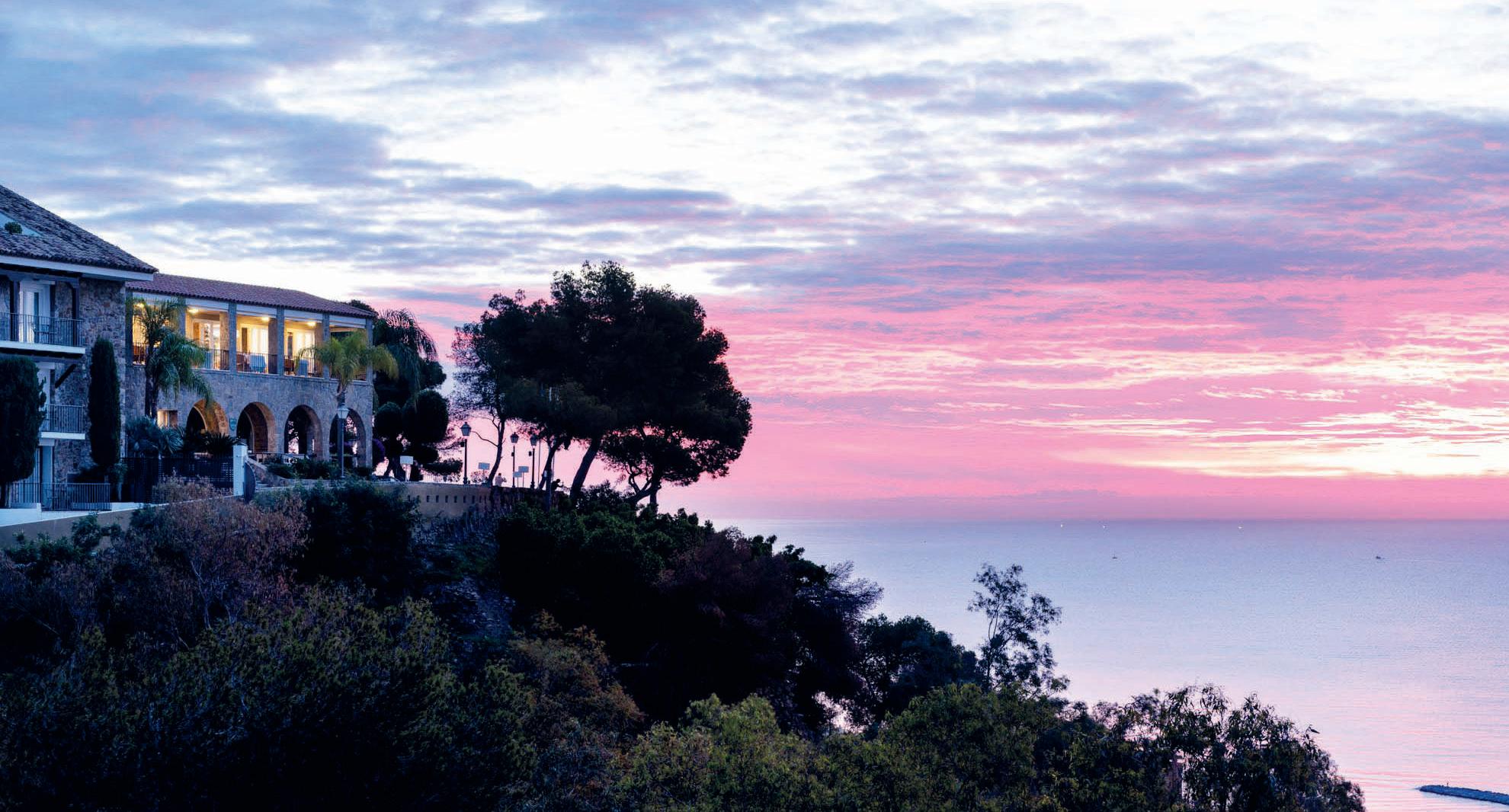
Are you partial to a glass of sherry?
Then come with us to the Antigua Casa

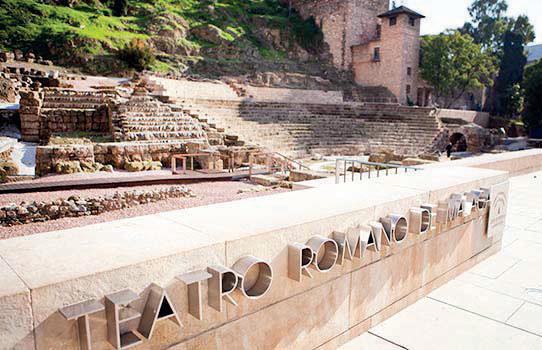

de Guardia, tucked away in a narrow alley just off the Alameda Principal. This place is the real deal – a wide selection of sherries and fortified Andalucian wines are available on draft, plates of shrimps, cheese if you’re peckish – and the waiter keeps your tab by chalking the prices on the surface of the counter! Various towns in southern Spain have superb markets, with their riots of colour, fragrances and salty humour – but not many are located, as in Malaga, in a former Arabic boatyard!
If you haven’t already visited the Atarazanas Market, you’ve got a treat in store! Now safely inland, when it was built 800 years ago, Atarazanas was at the sea’s edge. After the Christians captured Malaga in 1487, the boatyard underwent a variety of uses – convent, hospital – as land was gradually reclaimed from the Mediterranean, until in the mid-20th century it became the city’s fruit, fish and meat market. A stained-glass window (1973) recalls the relationship between the market and the not-toodistant sea.
If you’re overnighting in Malaga and you fancy seeing a flamenco performance, you could do a lot worse than pay a visit to Vino Mio, a small restaurant to the left of the Cervantes Theatre in Plaza Jeronimo Cuervo.
A small group of enthusiasts puts on an intimate show each evening, Wednesday to Sunday, usually starting at about 8:30pm. There is no table charge (contrary to the spirit of true flamenco, a lot of Malaga bars will ask you to pay 25 euros simply for being there!), but if you come for the flamenco, you will be expected to eat and drink.
This place is not a tourist spectacular kind of joint – it’s ‘bijou’, but the young artists are se- rious about what they do, and you will proba-
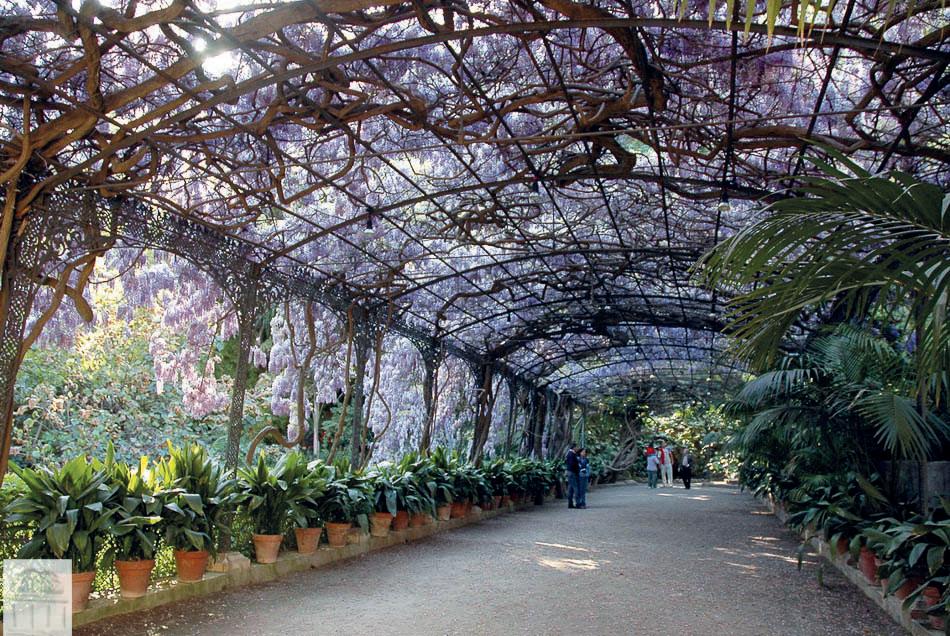
bly see some dancing.
Still exploring? Pop into the English Cemetery – Malaga’s oldest non-Catholic burial ground – a peaceful hillside garden that tells stories of shipwrecks, poets and adventurers. Or duck into the Museum of Glass and Crystal in a quiet backstreet of the San Felipe Neri district – a beautiful 18th-century house filled with antique stained glass and charming family history.
Don’t overlook the Jardin Botanico Historico La Concepcion, a subtropical garden just outside the city that feels like something out of a 19th-century novel.
For something different, head to the Centre Pompidou – yes, that Pompidou – housed in a colourful glass cube down by the port. The modern art exhibitions are fresh, quirky, and rarely crowded.
Or take the lift up to the rooftop of the AC Hotel Malaga Palacio, where you’ll find one of the best panoramic views in town, with a cocktail bar to match – no reservation needed, just a little sense of adventure.
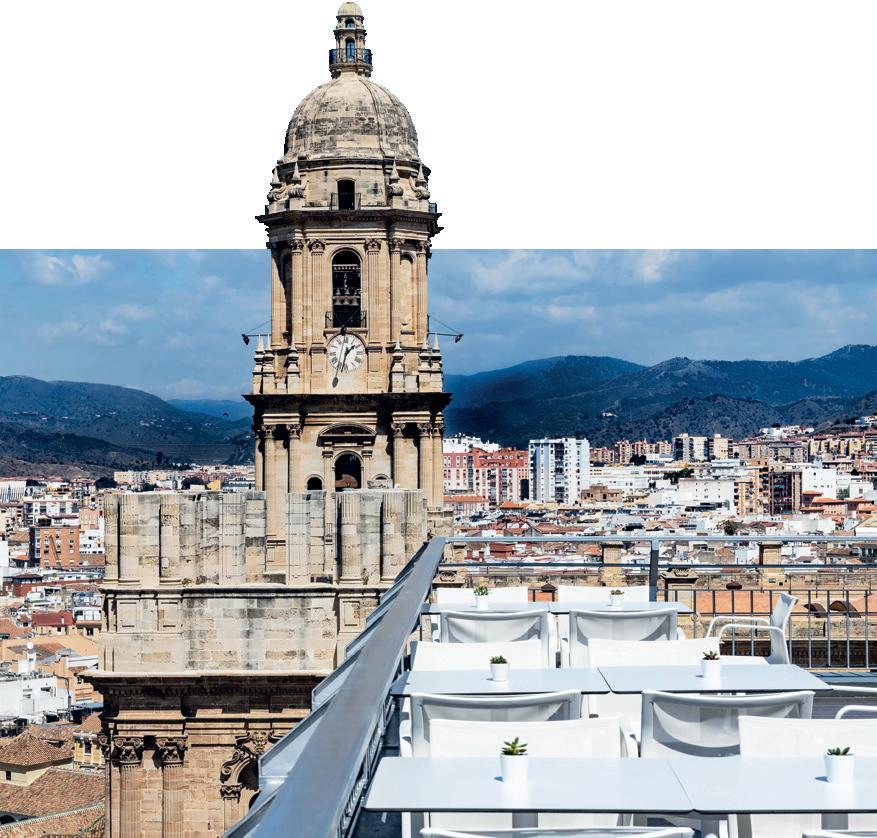
I could easily have written a second article, without exhausting Malaga’s delights – and we still haven’t mentioned Picasso!
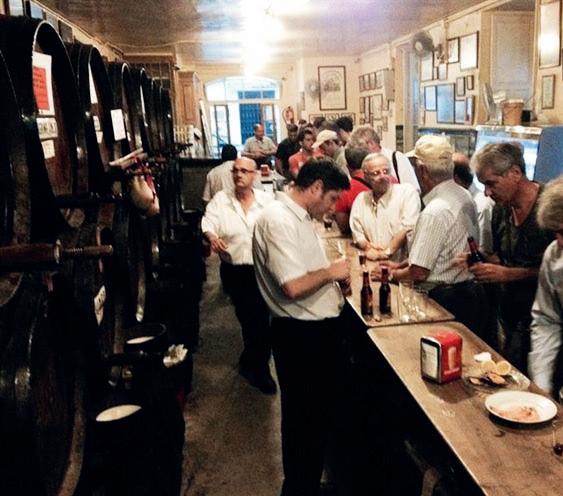
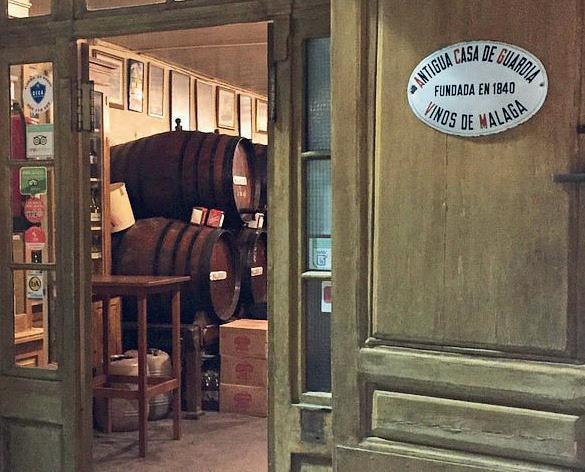
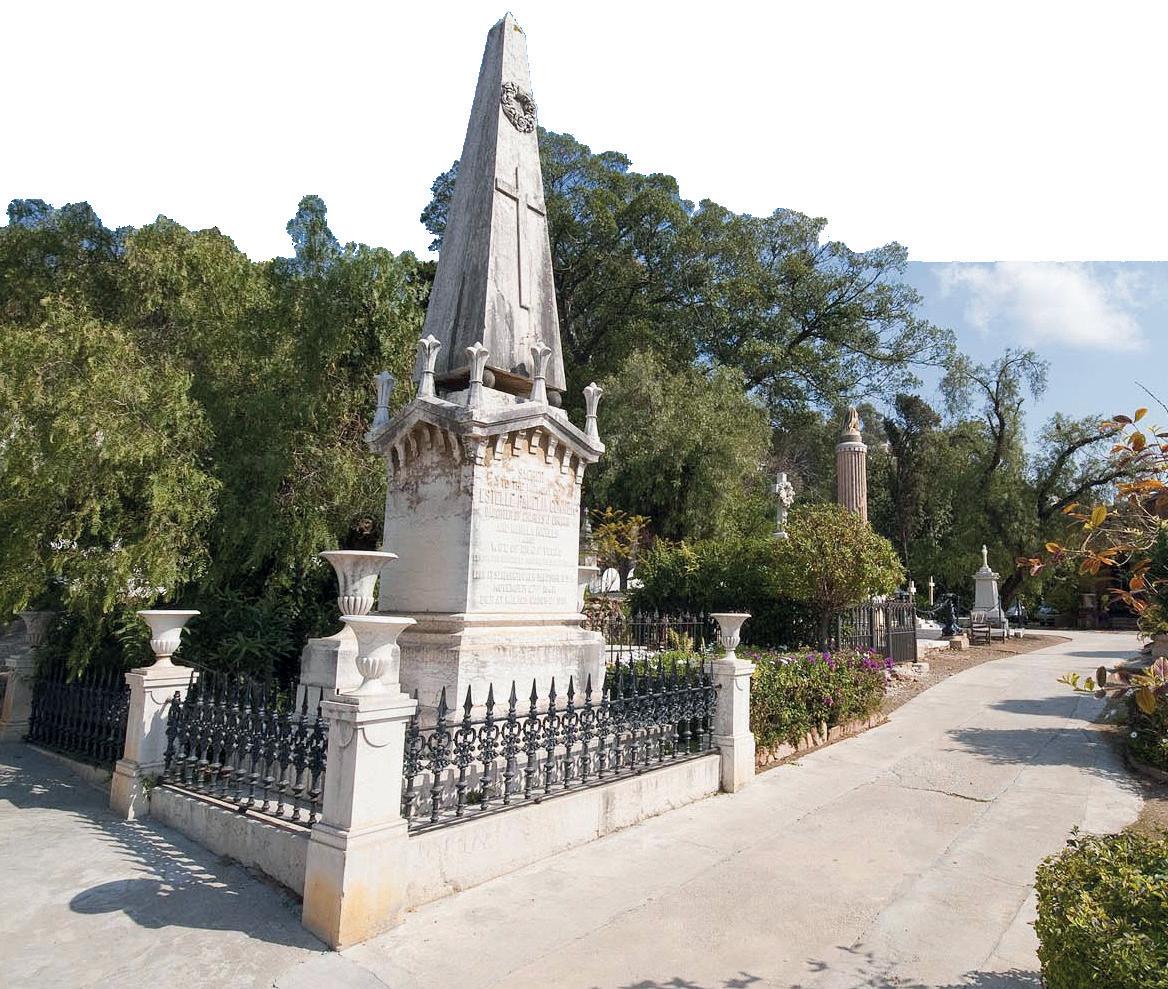
Top chefs Pedro Subijana and Jesus Sanchez tell Olive Press a lack of education is behind alarming obesity growth among Spain’s youngsters, writes Jon Clarke
IT has ‘never been more important’ to teach children to cook.
This is the view of the ‘Godfather of Spanish cuisine’, Pedro Subijana (pictured with Olive Press editor Jon Clarke)
The celebrated three Michelin star chef, from San Sebastian, told the Olive Press, Spain risks losing its cherished Mediterranean diet if youngsters aren’t taught to ‘eat healthier’.
“It is not just up to parents to explain healthy dietary habits, the government should be making it compulsory for classes at primary school,” insisted Subijana.
“We need to teach them as youngsters. They need to learn about the big health problems that exist. Obesity is a huge problem in Spain and it is getting worse.”
His message comes after it emerged Spain has one of the worst obesity rates in Europe, with 40% of children being overweight or obese, a figure which has doubled in two decades.
He was speaking at a Chefs for Children charity event in Benahavis, where 150 youngsters with diabetes were taught how to cook by 44 of Spain’s leading chefs.
To remedy the problem, the 76-yearold behind Akelarre restaurant insists we need to


Pedro Subijana has cooked in his kitchen at Akelarre restaurant in San Sebastian for 50 years.
“And I’ve had three Mi- chelin stars for 18 years now and had two stars for 25 years before that,” he told the Olive Press.
“I love coming in to cook and we have lots of young chefs who come up with new ideas and formulas every day and I am the lucky one who gets to try them and de- velop them,” he added.
protect the culture of the Mediterranean diet, the importance of fish, fresh vegetables, olive oil and pulses.
“We often have youngsters coming into our restaurant to learn and events like this are a brilliant way to encourage and spread the message,” continued Subijana.

His words were backed up meanwhile by another celebrated chef Jesus Sanchez, of Cantabria’s famous Cenador de Amos restaurant.
“We have simply forgotten the roots of Spanish cuisine and it’s very worrying,” said the three Michelin star talent.
“There is far too much Asiatic and fusion cooking and we need to get back to the Mediterranean diet.
“It’s great that so many new restaurants are opening in Sevilla, Jaen and Cordoba,” insists masterchef Pedro Sanchez (above), from three Michelin star joint Cenador de Amos.
“There are so many small, independent private initiatives opening up all the time. The talent has truly come south.”
And he should know, having begun his glittering career at Taberna del Alabardero in Puerto Banus.
“I love the amazing evolution here, in particular in Malaga, with Jose Carlos Garcia and Benito at Bardal, in Ronda, where I ate last night. “I really think Benito or Marcos at Skina in Marbella will win a third star in November. Maybe both of them.”
“It’s a scandal that we are not eating more fish. Salmon, sea bass and sardines are so good for us. The benefits are enormous.
“I would like to see more government help in supporting young chefs who are going back to their roots. I really hope those in Madrid hear us”.
Pilar Candil, organiser of the event, now in its seventh year, said: “It was particularly great to work with kids with Type 1 diabetes this year as more than anyone they need to know how to eat well.
“I think we are now getting over the message that eating healthily can and should be fun.”

6

By Dylan Wagemans

TRAIN travel is undeniably romantic - the gentle rhythm of the rails, the slow reveal of rolling hills and dramatic coastlines, and the grand old stations that serve as gateways to adventure.
Spain boasts over 15,000 kilometres of railway lines and more than 200 stations, and the journey often begins - and ends - in buildings so beautiful they deserve a trip in their own right.
Many of the country’s railway stations are steeped in history, culture, and jaw-dropping architecture.
From ornate Belle Epoque masterpieces to Moorish-inspired gems, these stations aren’t just transport hubsthey’re living museums, bursting with stories and style. Some still hum with the bustle of daily commuters, others have been restored and repurposed into hotels, galleries, or cultural centres.
We start off with the old station in the Andalucian city of Almeria.
Designed by a French architect at the end of the 19th century, the building stands as a great example of the iron and glass blend architecture that was popular during the Industrial Revolution.
The building was damaged in a fascist bombing raid in 1937, during the Spanish Civil War, but rebuilt back to its former glory.
The station has been defunct since the coming of the 21st century, but there are plans to transform the building into an event hall.

5
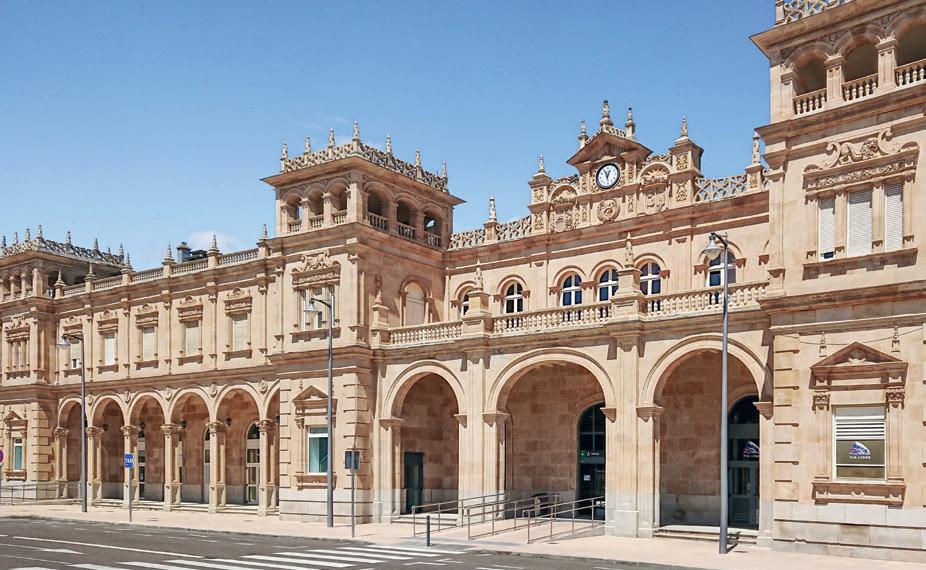
THE STATION OF ZAMORA

4
Whether you're a rail enthusiast, a history buff, or just someone who appreciates fine design, Spain’s most beautiful stations offer a journey through time, culture, and craftsmanship.
And the best part? They’re scattered across the country, giving you the perfect excuse to hop on a train and discover the artistry of the tracks at leisure.
So pack your bags, grab your ticket, and let the Olive Press guide you to seven of Spain’s most beautiful train stations. These are destinations in themselves that prove the magic of travel begins long before you reach your final stop.
Opened in 1917, Valencia’s main station is an icon of Valencian modernism.
The building fascinates with its façade adorned throughout with motifs inspired by local agriculture, such as oranges and flowers.
As the main station of Valencia, it receives around 15 million passengers every year.
Due to its architectural characteristics and ornamental attributes, it was declared a Historic-Artistic Monument in 1961 and an Asset of Cultural Interest in 1983.
Located in the autonomous community of Castilla y Leon, the neo-plateresque station of Zamora stands out, with its four towers, coats of arms and its central clock.
Although it was designed in 1927, the building wasn’t completed until 1958, as the Spanish Civil War slowed down much of the construction.
The station played a crucial
role in the post-war economic recovery, facilitating the transport of essential goods and the movement of people at a time when other forms of transport were limited.
In addition, the station building became an architectural emblem of Zamora, representing the rebirth of the railway infrastructure after years of conflict.



3
The Concordia station in Bilbao is a jewel of Basque modernism with colourful stained glass windows and ceramic decorations throughout.
Opened in 1902, the station serves as a terminus for several narrow-gauge railway services in the area.
Narrow-gauge tracks were laid down due to the region’s difficult topography.
After the construction of a new high speed line is finished, Bilbao-Abando station will be renovated to accommodate all railway services starting in Abando, which will include the narrow-gauge services currently starting at this station.
Bilbao-Concordia will cease to serve as a railway station after then, and its future use is still unclear.
For decades it was considered the most spectacular international station in Europe. Built in 1928 in the middle of the Pyrenees, Canfranc was a key railway link between Spain and France. This came to an abrupt end in 1970 when a train derailment damaged an important bridge in France. With only minimal services over five decades, Canfranc station experienced a major decline and neglect, resulting in much of the site becoming derelict.
As of 2024, the site has been reborn as a luxury hotel, with the original platforms and façade still preserved.
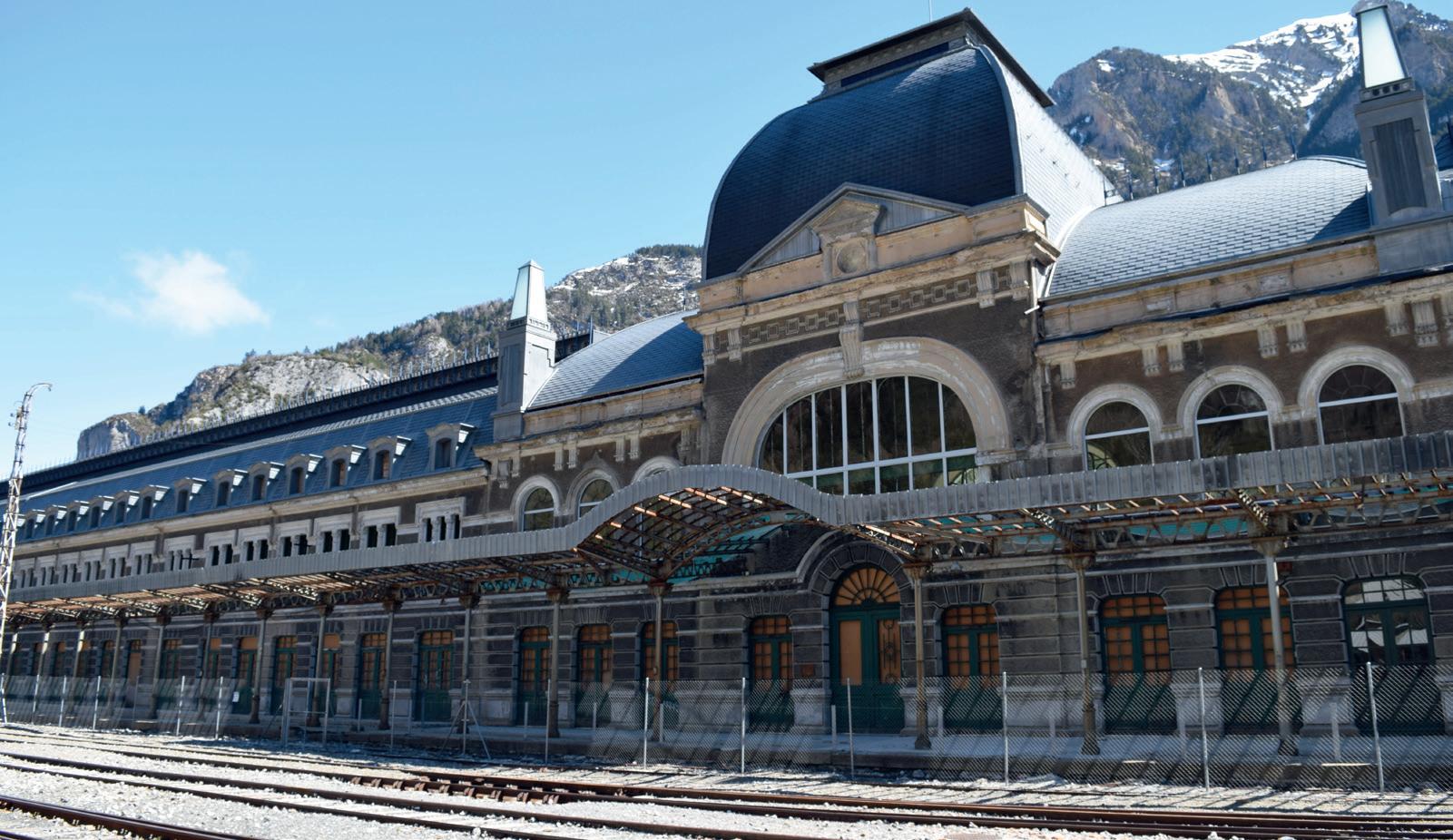

WHILE Spain’s major cities boast grand and bustling train stations, some of the country’s most charming stops are found in its rural heartlands. Nestled along the historic ‘Mr Henderson’ line, which runs from Ronda to Algeciras, two particularly picturesque stations stand out.
Benaojan Station, built in 1892, remains one of the most popular stops along the line.
Its appeal lies not just in its quaint design, but also in its proximity to the famous village of Benaojan, renowned for its traditional sausage-making.
With three trains a day running to Algeciras, Ronda, and Granada, it offers a convenient link for both locals and travellers.
The station itself is an architectural delight. A woodfringed canopy, supported by elegant wrought-iron pillars that stretch across the adjacent platform, evokes a dis tinctively Anglo - or even colonial Indian - atmosphere. Further along the line lies Jimera de Libar Station, also

SPAIN has slapped a ban on artificial cannabis-laced sweets after a surge in poisoningswith 24 cases already this year.
The Health Ministry says the sugary snacks, made with labcooked cannabis-style chemicals, pack a punch even stronger than THC.
While technically legal until now, they’re being reclassified as illegal drugs with zero medical use.
Docs at Barcelona’s Hospital Clinic sounded the alarm as cases doubled in two years.
The Catalan city’s council has already announced a crackdown, which will see shops hit with tough new inspections to stamp out sales.
Officials say the move will plug a dangerous legal loophole.



November 29thDecember 12th 2023
LOOKING FOR MORE TRAVEL STORIES?
Scan to visit our website
May 7th - May 20th

dating back to 1892.
With its alpine feel and dramatic mountain backdrop, it could easily be mistaken for a station somewhere in the Swiss Alps.
History buffs will appreciate the remains of the original steam-engine water tower base, still visible today.
The station once featured a well-loved restaurant and bar that made head lines in 2008 when former British PM David Cameron (left) stopped by for drinks during a hike.
Unfortunately, the establishment closed its doors in 2019, but the memory adds to the station’s colourful past.

It’s the busiest station in the whole of Spain and one of the most recognizable icons, but Atocha isn’t just functional: it’s also a visual spectacle. Atocha is the main hub for Spain’s AVE high-speed trains to major cities like Barcelona, Sevilla, Valencia, and Malaga. Redesigned in the 1990’s after a devastating bombing by Islamist terrorists, the old terminal now houses a tropical garden inside the station, which is open to the public and features 7,000 plants. Its interior tropical garden stands out, where hundreds of plants coexist under an iron and glass dome.
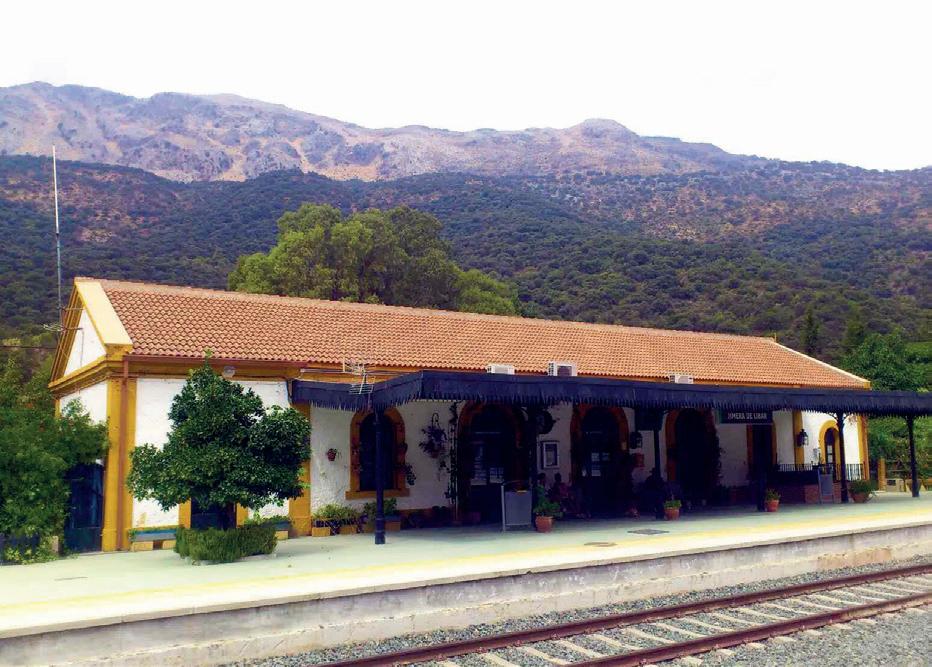
AI meets rehabilitation as Spanish project pioneers smart sensors
AN innovative collaboration in Valencia is looking into AI helping to diagnose muscle and bone problems to treat patients better and quicker.
The Kinessensor Project has seen four groups come together to see what can be done to help arthritis and sports injuries sufferers.
They want to create a system with AI that uses sensors to identify and monitor pain in body joints, ligaments or muscles.
The project is targeting an ailment known as arthrogenic
Across: 6 Shanghai, 8 Omit, 9 Debtor, 10 Caters, 11 Mortar, 14 Snags, 15 Leave, 17 Darwin, 21 Ethnic, 22 Hearty, 24 Size, 25 In denial.
Down: 1 Phlegm, 2 Sherpa, 3 Ditch, 4 Don’t-know, 5 Oil rig, 7 Net, 12 Revenues, 13 Rod, 16 Entail, 18 Aphids, 19 Not far, 20 Acrid, 23 Ann.
By Alex Trelinski
muscle inhibition (AMI). It causes stiffness of the hamstrings and appears in anterior cruciate ligament injuries and knee prosthetic surgery. AMI leads to muscle reduction, increased pain and problems for sufferers who are trying to recover.
Joaquin Castan from the Plastics Technology Institute, Aimplas, said: “If we manage to develop ways to prevent AMI, to treat it or make deci-


sions over the right time for a surgery, we will be able to improve patient treatments.”
The consortium behind Kinessensor is looking into integrating flexible printed sensors using wireless technology with real-time monitoring and AI to measure muscle patterns so that doctors can make the right diagnosis.
Another group involved is Blautic Design from Paterna
who make electronic circuits.
The firm’s CEO, Javier Soriano, said: “The system will be a complementary tool that will allow patients to continue their exercises and treatments at home but with monitoring.”
“This new approach will produce better rehabilitation, as well as cutting costs and recovery times, but also empowering patients during recovery,” he added.

A TOP Spanish nutritionist has warned that obesity harms fertility in both men and women.

Belen Fontan Calvo (left), of Madrid’s Ruber Juan Bravo Hospital, says excess weight disrupts hormones, lowers sperm quality, and raises miscarriage risk. Being underweight can also affect menstrual cycles and fertility.
To boost conception chances, she recommends a balanced diet rich in zinc, fibre, iron, calcium, antioxidants and omega-3s. Key foods include lean meats, leafy greens, seafood, cereals and avocados.
Fontan advises planning weekly menus, eating balanced meals, and avoiding alcohol, sugary drinks and processed foods to improve reproductive health naturally.
SIX rattlesnakes that could produce a potentially life-saving venom for people with serious heart problems have been born at Terra Natura Benidorm.
The dark pygmy reptiles are a species originating from the United States which is especially prominent in Florida.
Samples for continuing research will be sent to the USA and the National Natural Toxins Research Centre of Texas A&M University–Kingsville. Terra Natura’s reptile expert, David Marti, said: “The species produces venom with enormous biomedical potential.”